Abstract
Insulin-131I was administered intravenously to normal subjects, to patients with maturity-onset diabetes and normal renal function, and to nondiabetic patients with renal failure. The ensuing plasma disappearance curves of immunoprecipitable radioactive insulin were determined, and these data were analyzed in a variety of ways. Firstly, fractional irreversible loss rates of insulin from plasma were calculated and found to be greatly diminished in patients with renal failure (t½ = 39 min), as compared with normal (t½ = 15 min) and diabetic subjects (t½ = 12 min). Secondly, plasma insulin-131I disappearance curves were resolved into sums of three exponentials by the method of “peeling,” and values for the resultant three slopes and half-lives were determined. Patients with normal renal function had similar values for all parameters, while those patients with renal failure were differentiated on the basis of the slope of the last component, with a prolongation of its half-life to 275 min (approximately twice normal). Finally, a three pool model was formulated to describe the kinetics of plasma insulin disappearance in man, representing plasma (pool 1), interstitial fluid (pool 2), and all tissues in which insulin is utilized and degraded (pool 3). The proposed model adequately describing the disappearance curves of insulin-131I observed in all patients indicated that volumes (per cent body weight) of pool 1 (4.04) and pool 2 (10.11), calculated on the basis of the model and the experimental data, corresponded closely to estimates of plasma and interstitial fluid volumes obtained by independent means. It also demonstrated that patients with renal failure were characterized by a decreased removal rate of insulin from pool 3 and an increased recycling rate of insulin from pool 3 to pool 2. It is concluded that the proposed model represents a reasonable description of the kinetics of insulin distribution and degradation, and that its use provides quantitative insights into the physiology of insulin metabolism.
Full text
PDF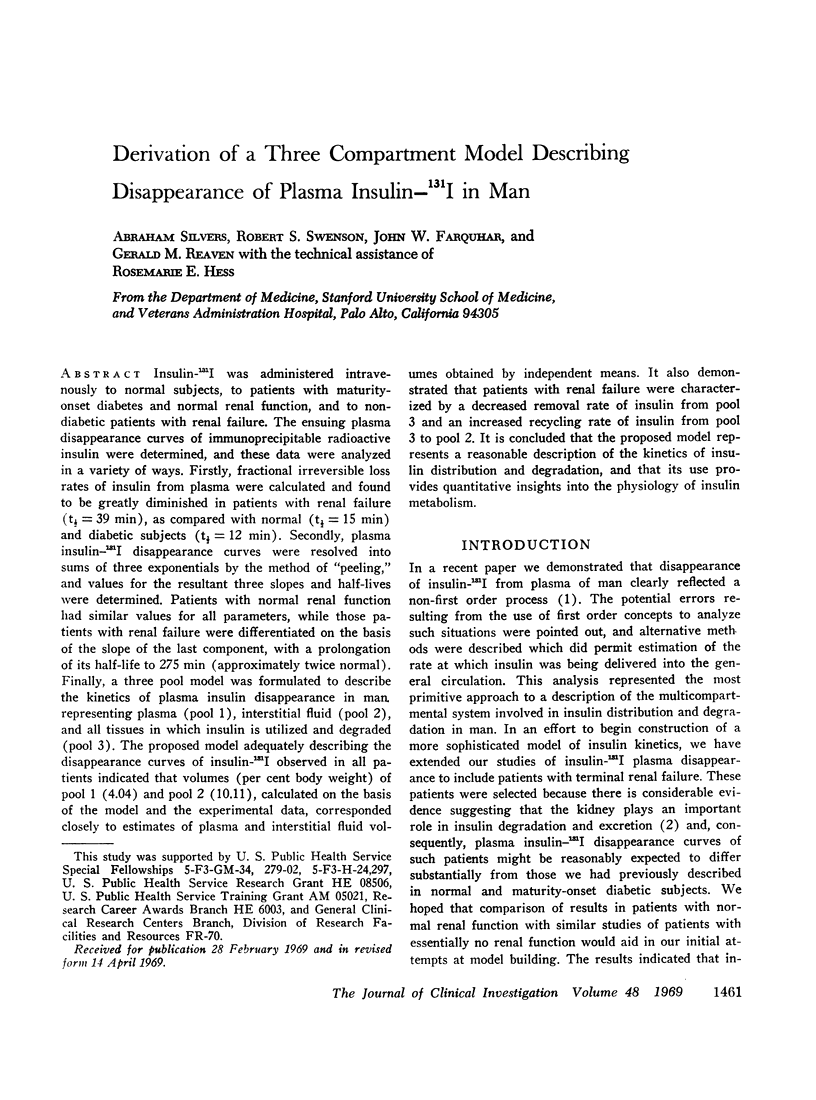
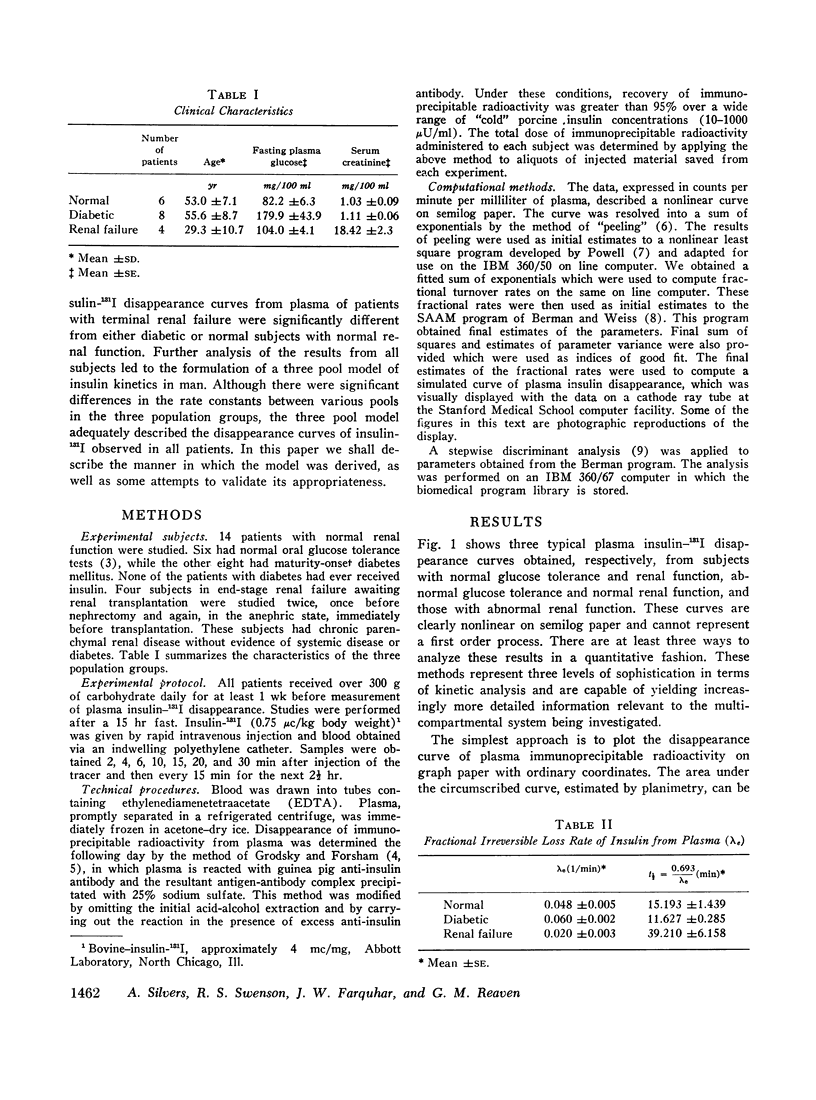
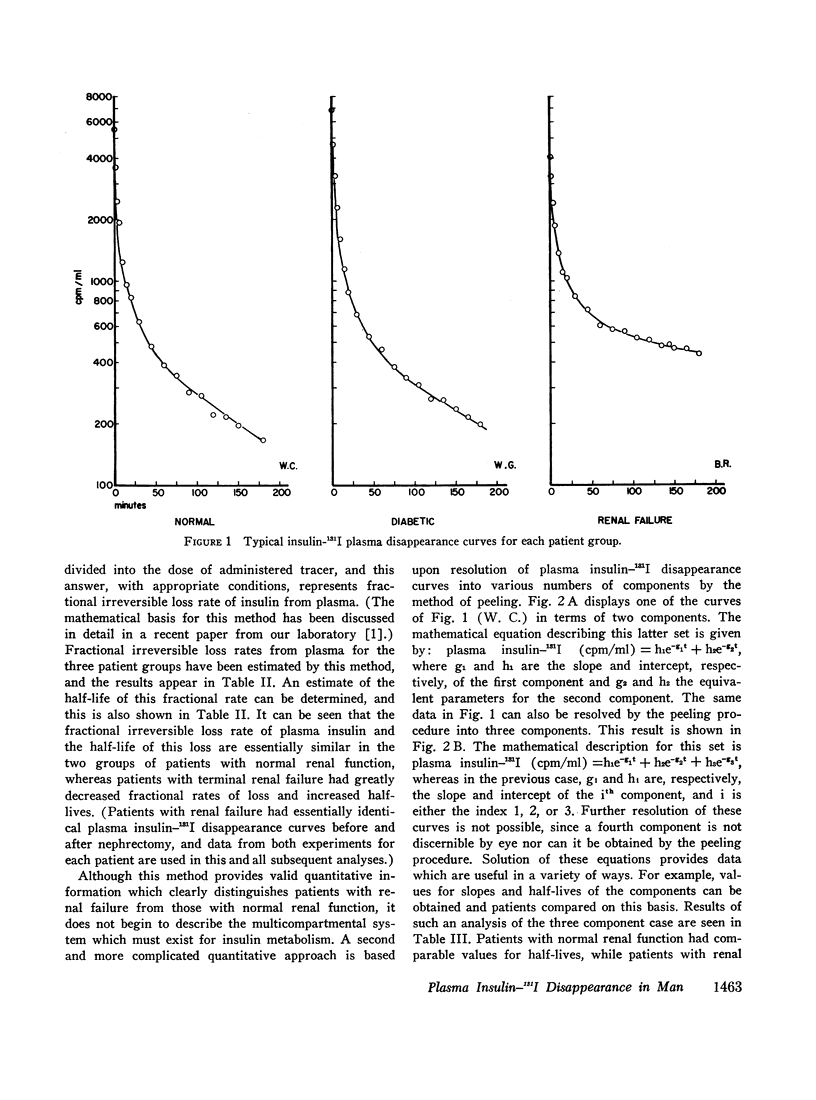
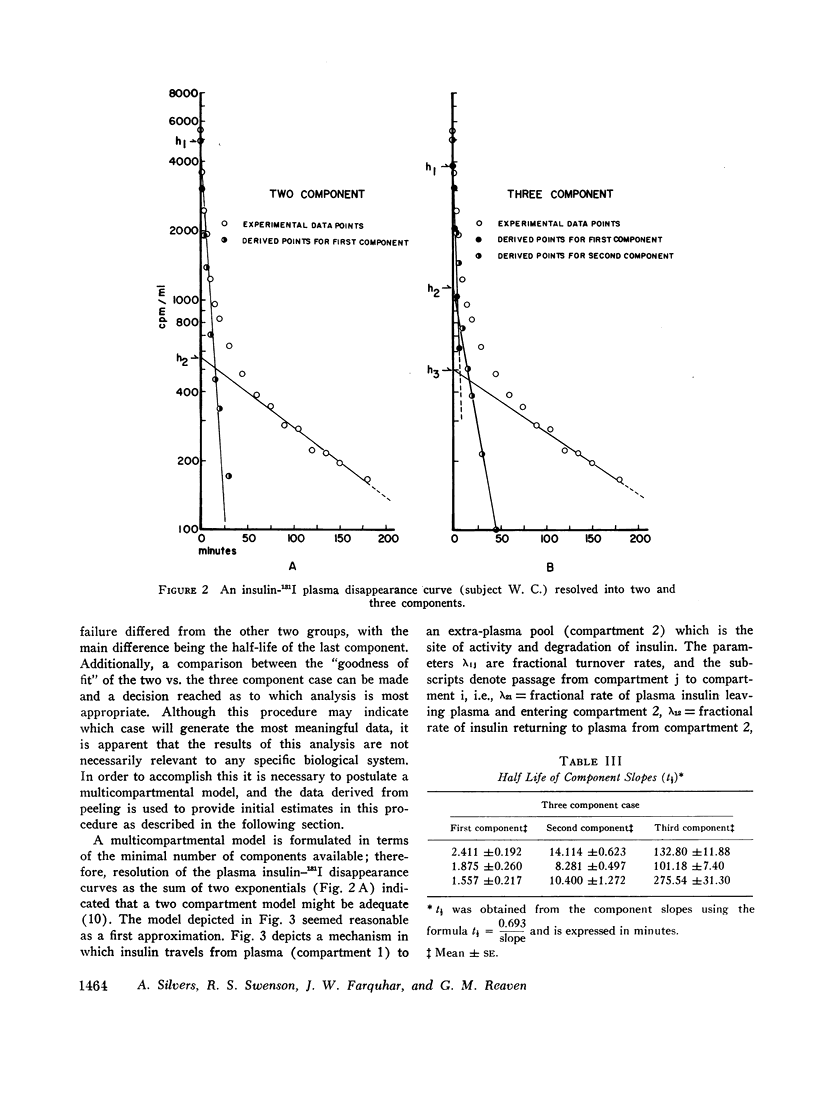
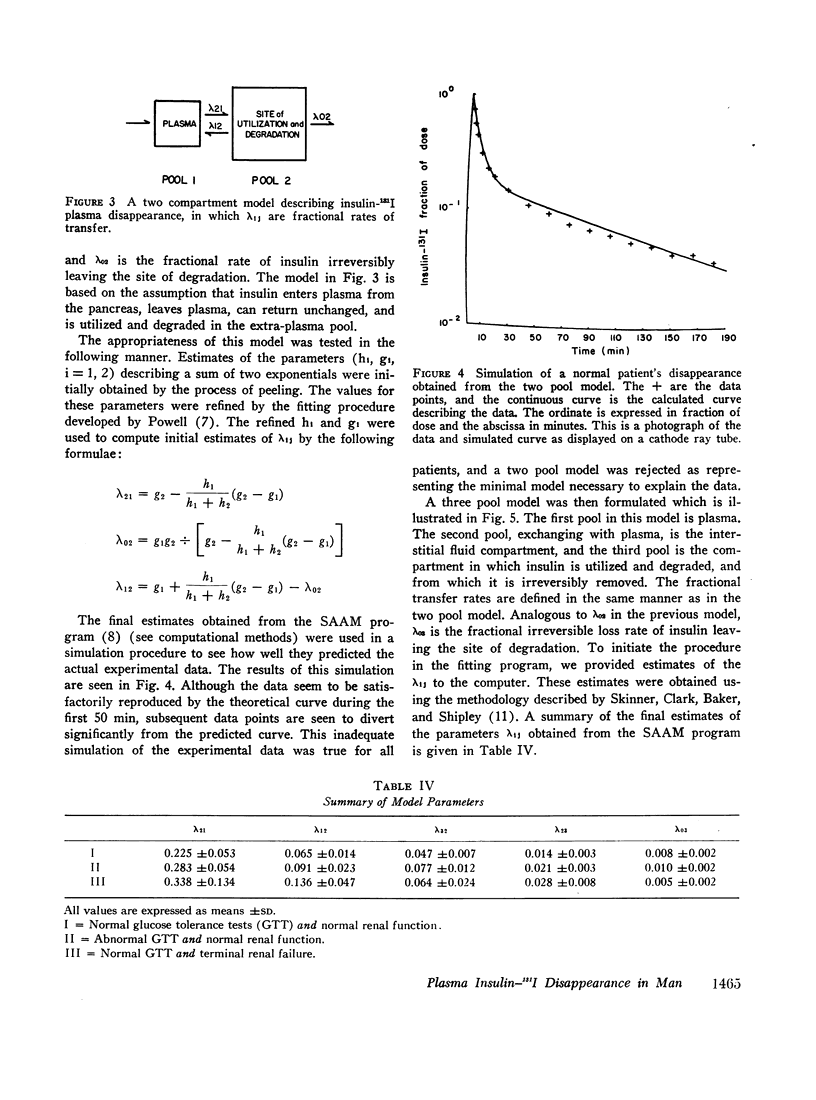
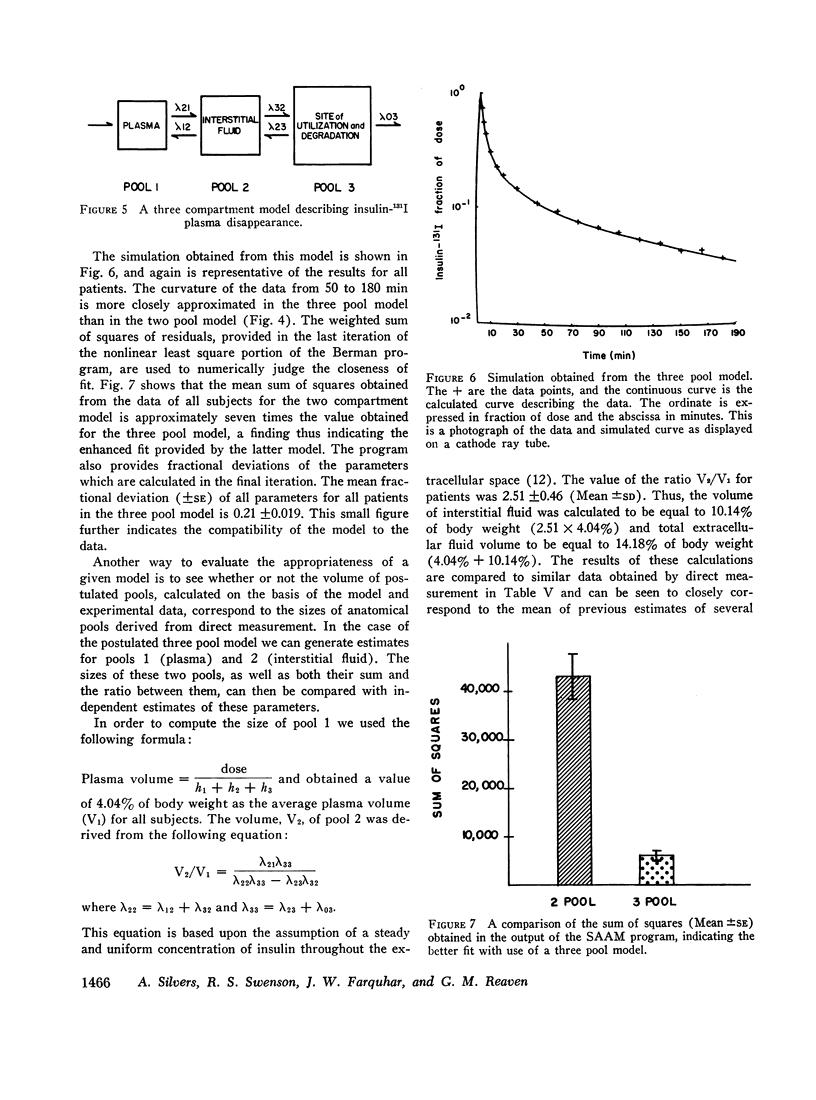
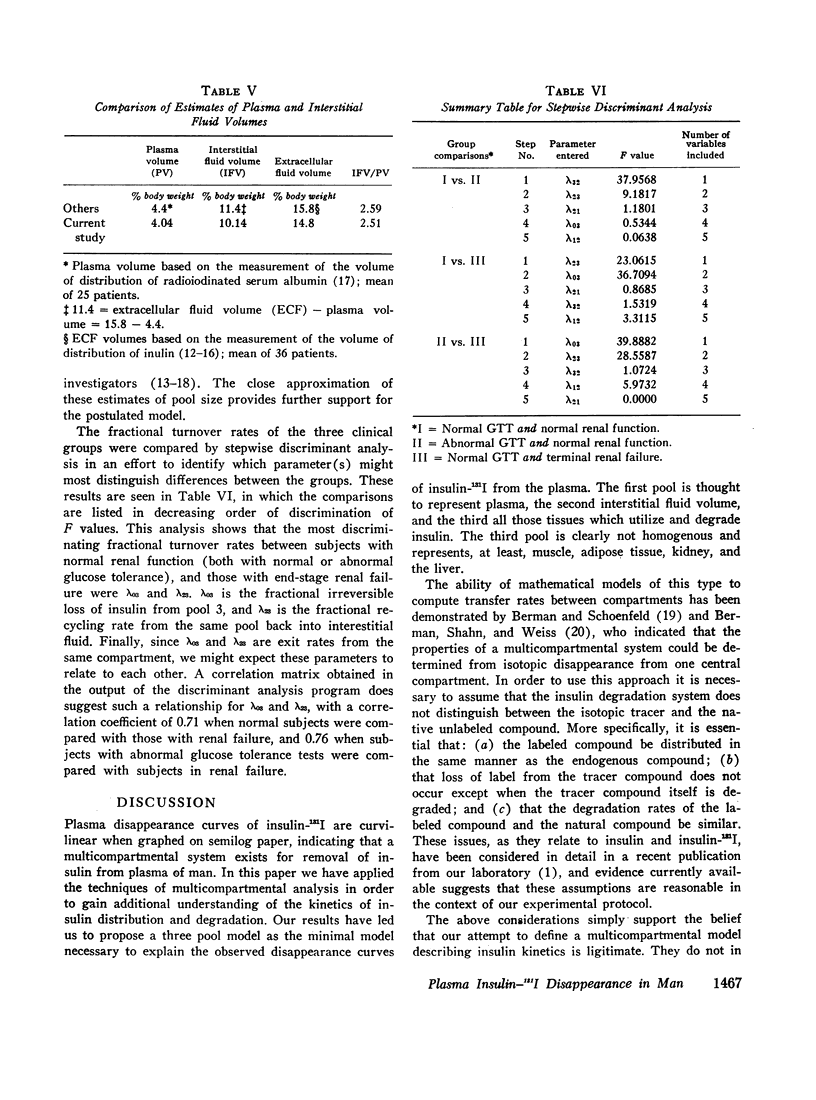
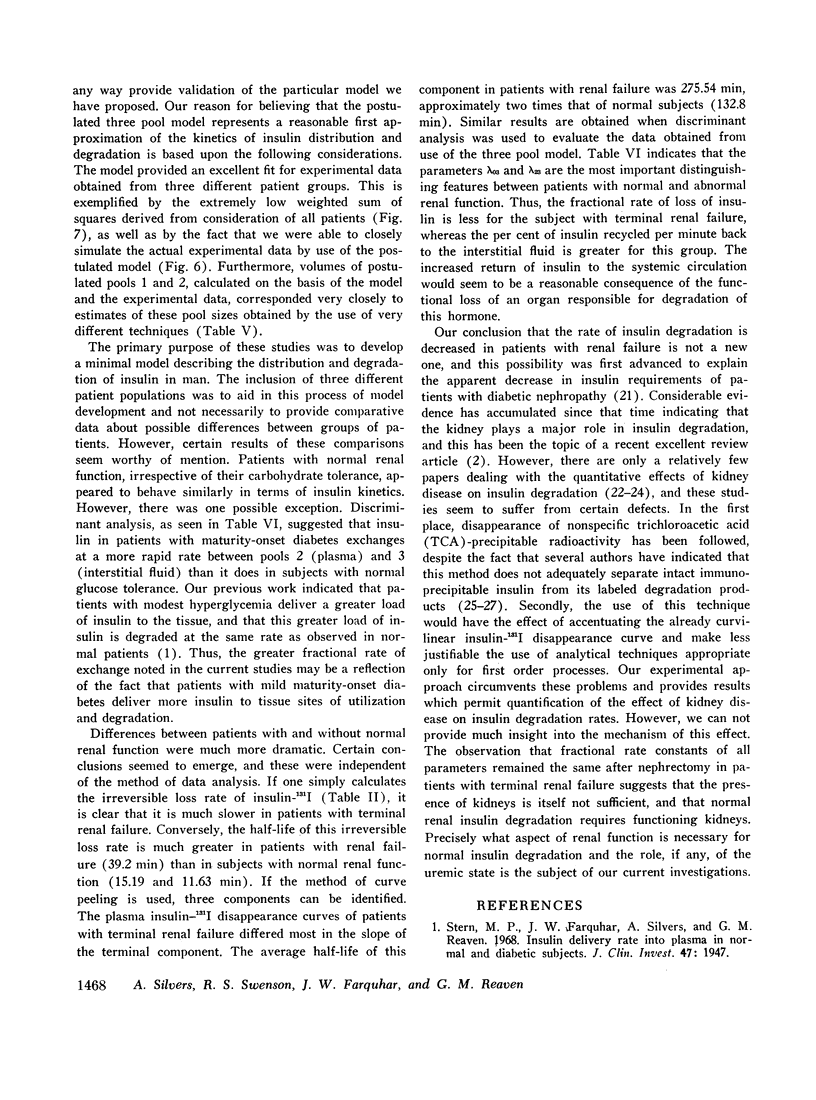
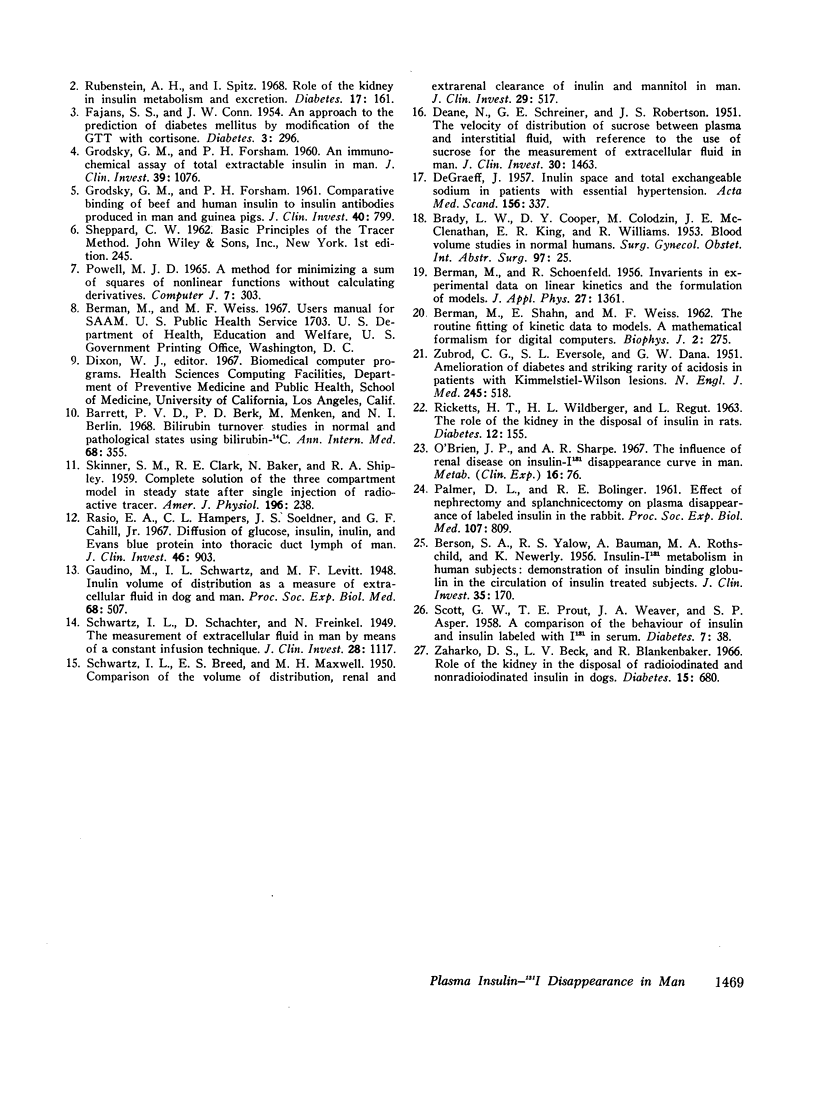
Selected References
These references are in PubMed. This may not be the complete list of references from this article.
- BERMAN M., SHAHN E., WEISS M. F. The routine fitting of kinetic data to models: a mathematical formalism for digital computers. Biophys J. 1962 May;2:275–287. doi: 10.1016/s0006-3495(62)86855-6. [DOI] [PMC free article] [PubMed] [Google Scholar]
- BERSON S. A., YALOW R. S., BAUMAN A., ROTHSCHILD M. A., NEWERLY K. Insulin-I131 metabolism in human subjects: demonstration of insulin binding globulin in the circulation of insulin treated subjects. J Clin Invest. 1956 Feb;35(2):170–190. doi: 10.1172/JCI103262. [DOI] [PMC free article] [PubMed] [Google Scholar]
- Barrett V., Berk P. D., Menken M., Berlin N. I. Bilirubin turnover studies in normal and pathologic states using bilirubin-14C. Ann Intern Med. 1968 Feb;68(2):355–377. doi: 10.7326/0003-4819-68-2-355. [DOI] [PubMed] [Google Scholar]
- DE GRAEFF J. Inulin space and total exchangeable sodium in patients with essential hypertension. Acta Med Scand. 1957 Jan 15;156(5):337–350. doi: 10.1111/j.0954-6820.1957.tb00092.x. [DOI] [PubMed] [Google Scholar]
- DEANE N., SCHREINER G. E., ROBERTSON J. S. The velocity of distribution of sucrose between plasma and interstitial fluid, with reference to the use of sucrose for the measurement or extracellular fluid in man. J Clin Invest. 1951 Dec;30(122):1463–1468. doi: 10.1172/JCI102554. [DOI] [PMC free article] [PubMed] [Google Scholar]
- FAJANS S. S., CONN J. W. An approach to the prediction of diabetes mellitus by modification of the glucose tolerance test with cortisone. Diabetes. 1954 Jul-Aug;3(4):296-302; discussion, 302-4. doi: 10.2337/diab.3.4.296. [DOI] [PubMed] [Google Scholar]
- GRODSKY G. M., FORSHAM P. H. Comparative binding of beef and human insulin to insulin antibodies produced in man and guinea pigs. J Clin Invest. 1961 May;40:799–802. doi: 10.1172/JCI104313. [DOI] [PMC free article] [PubMed] [Google Scholar]
- PALMER D. L., BOLINGER R. E. Effect of nephrectomy and splanchnicectomy on plasma disappearance of labeled insulin in the rabbit. Proc Soc Exp Biol Med. 1961 Aug-Sep;107:809–812. doi: 10.3181/00379727-107-26763. [DOI] [PubMed] [Google Scholar]
- RICKETTS H. T., WILDBERGER H. L., REGUT L. The role of the kidney in the disposal of insulin in rats. Diabetes. 1963 Mar-Apr;12:155–161. doi: 10.2337/diab.12.2.155. [DOI] [PubMed] [Google Scholar]
- Rasio E. A., Hampers C. L., Soeldner J. S., Cahill G. F., Jr Diffusion of glucose, insulin, inulin, and Evans blue protein into thoracic duct lymph of man. J Clin Invest. 1967 Jun;46(6):903–910. doi: 10.1172/JCI105596. [DOI] [PMC free article] [PubMed] [Google Scholar]
- Rubenstein A. H., Spitz I. Role of the kidney in insulin metabolism and excretion. Diabetes. 1968 Mar;17(3):161–169. doi: 10.2337/diab.17.3.161. [DOI] [PubMed] [Google Scholar]
- SCOTT G. W., PROUT T. E., WEAVER J. A., ASPER S. P. A comparison of the behavior of insulin and insulin labeled with I 131 in serum. Diabetes. 1958 Jan-Feb;7(1):38–45. doi: 10.2337/diab.7.1.38. [DOI] [PubMed] [Google Scholar]
- SKINNER S. M., CLARK R. E., BAKER N., SHIPLEY R. A. Complete solution of the three-compartment model in steady state after single injection of radioactive tracer. Am J Physiol. 1959 Feb;196(2):238–244. doi: 10.1152/ajplegacy.1959.196.2.238. [DOI] [PubMed] [Google Scholar]
- Schwartz I. L., Breed E. S., Maxwell M. H. COMPARISON OF THE VOLUME OF DISTRIBUTION, RENAL AND EXTRARENAL CLEARANCES OF INULIN AND MANNITOL IN MAN. J Clin Invest. 1950 May;29(5):517–520. doi: 10.1172/JCI102289. [DOI] [PMC free article] [PubMed] [Google Scholar]
- Schwartz I. L., Schachter D., Freinkel N. THE MEASUREMENT OF EXTRACELLULAR FLUID IN MAN BY MEANS OF A CONSTANT INFUSION TECHNIQUE. J Clin Invest. 1949 Sep;28(5 Pt 2):1117–1125. doi: 10.1172/JCI102145. [DOI] [PMC free article] [PubMed] [Google Scholar]
- Stern M. P., Farquhar J. W., Silvers A., Reaven G. M. Insulin delivery rate into plasma in normal and diabetic subjects. J Clin Invest. 1968 Sep;47(9):1947–1957. doi: 10.1172/JCI105884. [DOI] [PMC free article] [PubMed] [Google Scholar]
- ZUBROD C. G., EVERSOLE S. L., DANA G. W. Amelioration of diabetes and striking rarity of acidosis in patients with Kimmelstiel-Wilson lesions. N Engl J Med. 1951 Oct 4;245(14):518–528. doi: 10.1056/NEJM195110042451402. [DOI] [PubMed] [Google Scholar]
- Zaharko D. S., Beck L. V., Blankenbaker R. Role of the kidney in the disposal of radioiodinated and nonradioiodinated insulin in dogs. Diabetes. 1966 Sep;15(9):680–685. doi: 10.2337/diab.15.9.680. [DOI] [PubMed] [Google Scholar]


